These days there is no shortage of competitive sports at our fingertips. Around the clock there are a myriad of networks that are dedicated to breaking down every aspect of the gladiators of today's arenas. Baseball’s World Series is broadcast around the globe, NFL football has never been more popular and off-season NBA trades now have long shots in the mix for the world title.
Practicing From Home
I love all aspects of sports. I’m embarrassed to say I can focus my attention on talking about sports much better than listening to my wife explain this week's kindergarten field trip. Watching someone hit a 100-mph fastball, hammer down a power-dunk or mount a fourth quarter comeback never gets old. Highly skilled pros seem to respond again and again under extreme pressure when it counts.The gift of clutch-time skills seems to come easy to these athletes. No doubt hours upon hours of year-round practice and training makes it all possible. Specific focus on strength, speed and agility has now become the norm to be competitive in today’s sports, even at the youth level.
As a father of four, time has become my most precious resource. The older I get, the faster days and months seem to fly by. At my current stage of life, free time is consumed mostly by parental duties. There is always a dance class, little league game, piano lesson or church activity that becomes priority number one. Add to that a full time job and a weekend of yard work and most of us have very little time to practice what we want to become proficient in. If shooting and hunting is your sport of choice, how can we find ways to stay polished when it’s our time to shine?
I spend many days on the Gunwerks’ rifle range instructing students on proper form and shooting techniques. We cover proven tactics that maximize each student’s ability to consistently place tight groups out past a half-mile. Our state of the art long range facility has all the required equipment to properly instruct in making and repeating this type of shooting. Students leave our two-day class with a solid understanding of ballistics and a greater confidence in their own ability to shoot. Months later, and with life pulling us in different directions, many intricacies of what was practiced at the range are now forgotten. Most realize this about the time we are pulling our rifles out of the safe and headed to our hunting destinations.
Before going into the field we all must know that our rifle will shoot accurately. Collecting accurate field data at the range is crucial. If you haven’t taken the time to know your rifle setup and what you can expect for results, you’re kidding yourself. We owe it to ourselves and to the game we pursue to be the most prepared shooters we can be. Thinking we can show up on the mountain and take shots downrange at any distance is ridiculous. I want to encourage each shooter to take pride in preparing for a one shot kill. Knowing you’re accurate at 100-yards is mandatory if you want to shoot well at 500. Confidence in your equipment is vitally important. Only after we do our preparations, can we expect the rifle to do its job.
I have implemented some off-season workouts that can be put into practice from home. No 1,000-yard range is needed which means there are no excuses why we can’t practice year round, even with limited time.
First things first, make sure your gun is unloaded. (Keep all ammunition locked in your gun safe, none of these drills require any ammunition to complete)
Many of the items we cover in our shooting courses have little to do with actually sending bullets down range. Knowledge is power, and having the knowledge of what is needed to make a shot in the field is a huge part of accurate shooting. Confidence in knowing how to prepare for the shot is first learned in the classroom, not on the range.
SHOOTING POSITIONS
It’s a common sight to see very accomplished bench shooters struggle when it comes to shooting prone. If you are likely to be making your shot lying prone between sagebrush in the field, then you need to replicate that prone positioning at home. Whether off a bi-pod or over a pack, your front rest needs to be one that can elevate your rifle, yet be stable enough to remain constant.
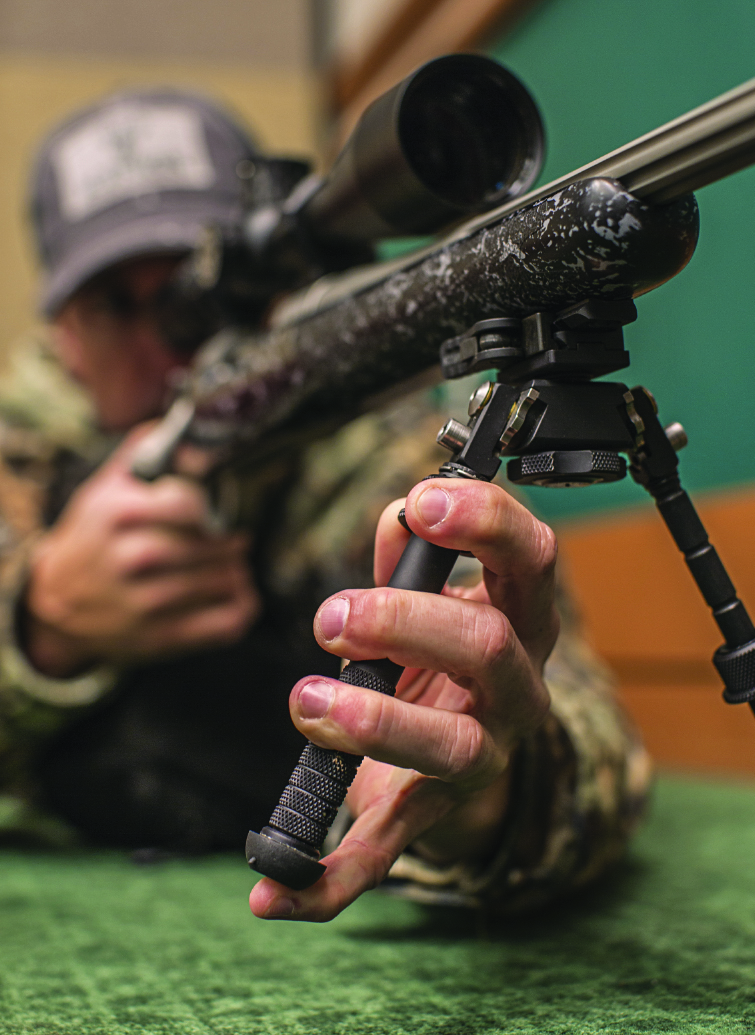
A good rear support is equally important. Find a rear support that gives you a solid two points of contact. This will stabilize your shot at your moment of truth and greatly reduce movement at the shot. Shooters will often try to contort their bodies to fit behind the rifle rather than making rifle adjustments to fit to your frame. If you’re not relatively comfortable in preparing for the shot, you will find it very difficult to be accurate, especially if you need a quick follow up shot. The comfort of your living room is the place and time to find out if your bi-pod is too short or your rear bag is too large, not on the side of the mountain.
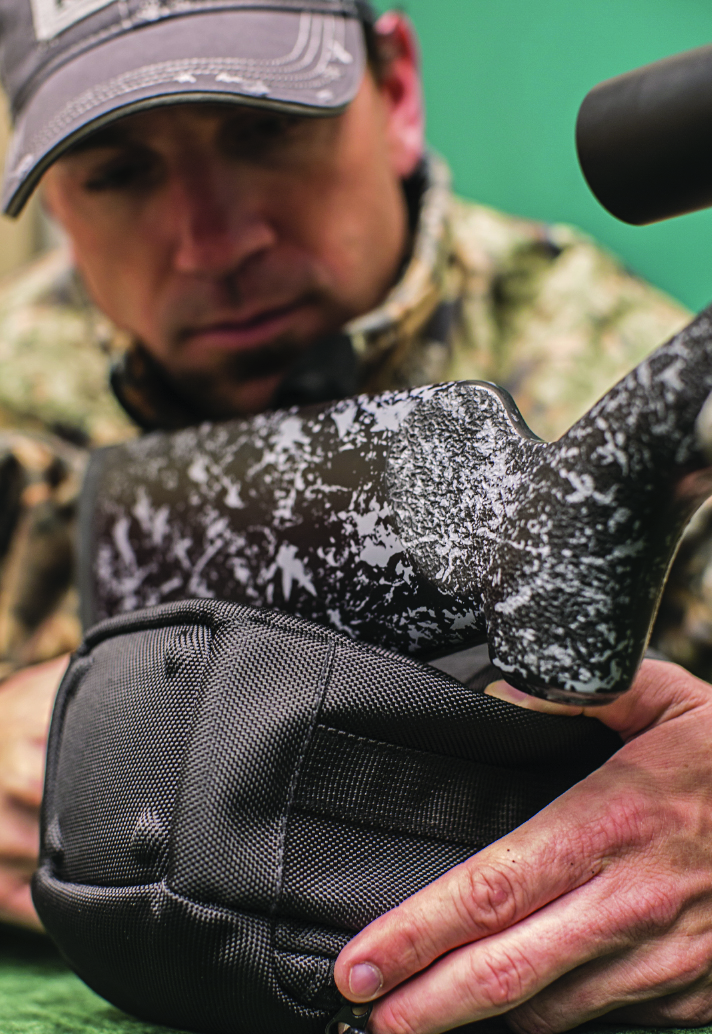
Exercise: Practice quickly getting into your expected shooting position and make sure comfort and proper rifle support both front and back is achievable. During practice, wear whatever clothes you expect to be wearing in the field. Stock placement will be much different in a t-shirt than in a heavy hunting jacket. Having all necessary shooting items in your pack will eliminate the frustration of being in panic mode when it’s go time. Now is the time to practice and repeat the motions of preparing the same way each time. Comfort with your gear will make all the difference knowing what each piece of equipment is designed to do and if you need to carry it in the field.
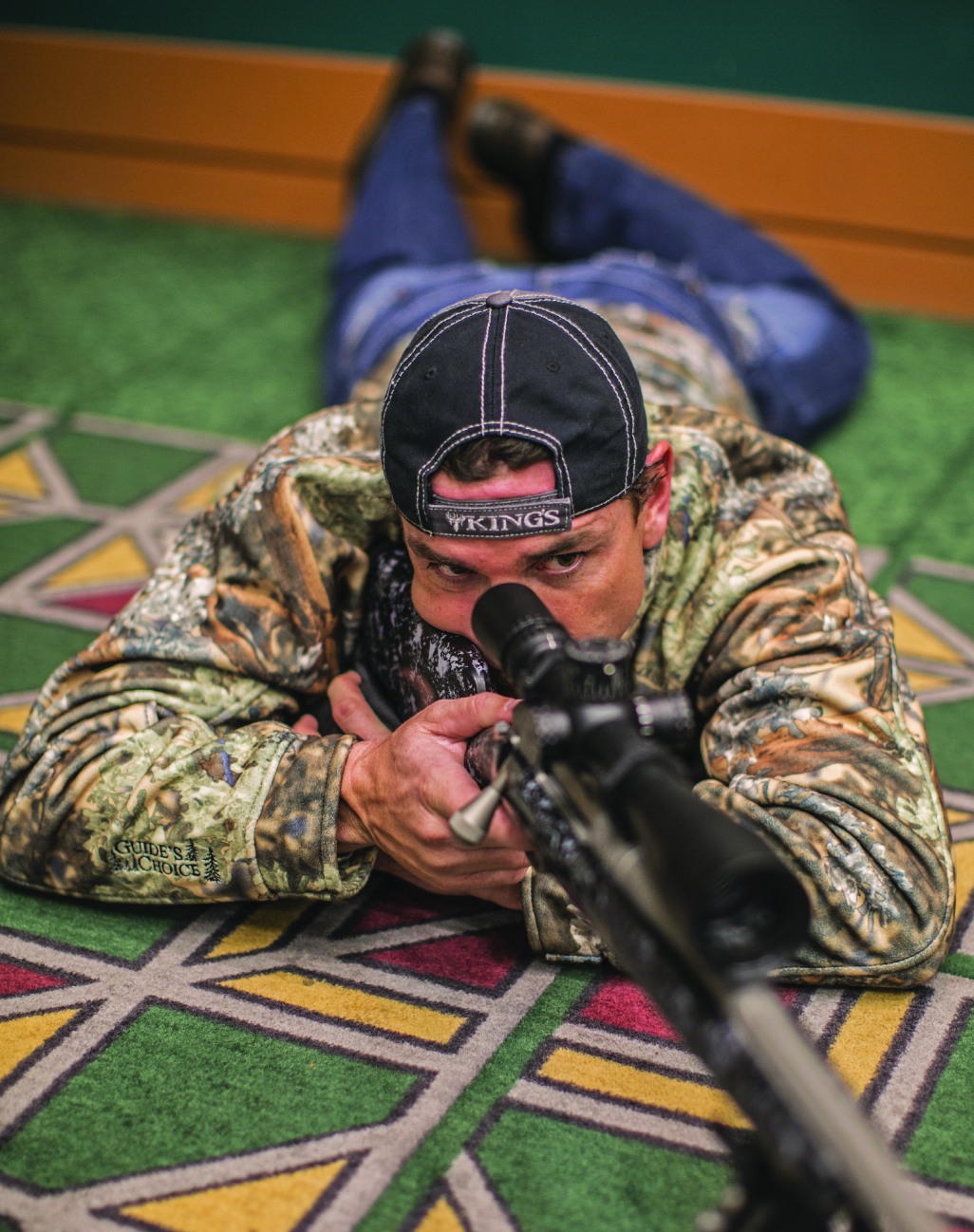
GET TO KNOW YOUR OPTIC
Many shooters own a dial turret scope, yet don’t really understand how it works. Dialing elevation up or down seems simple, but knowing your click values as well as how that relates to your specific load data is imperative. Does your scope have a zero stop feature that will take the guesswork out of where your dial stops? If not, you better get to know your scope and how to quickly zero your turret in a way you will remember. This is a simple thing many people overlook then get burned in the field at crunch-time. I have seen it happen, and it’s not good. Knowing how to dial your eyepiece magnification and parallax adjustment by memory, rather than breaking your shooting position will also save you time and may be the difference between success and failure. More often than not an animal will move while you’re preparing for the shot. You may need to make some adjustments to your scope multiple times before a clear shot is given. Be ready for this.
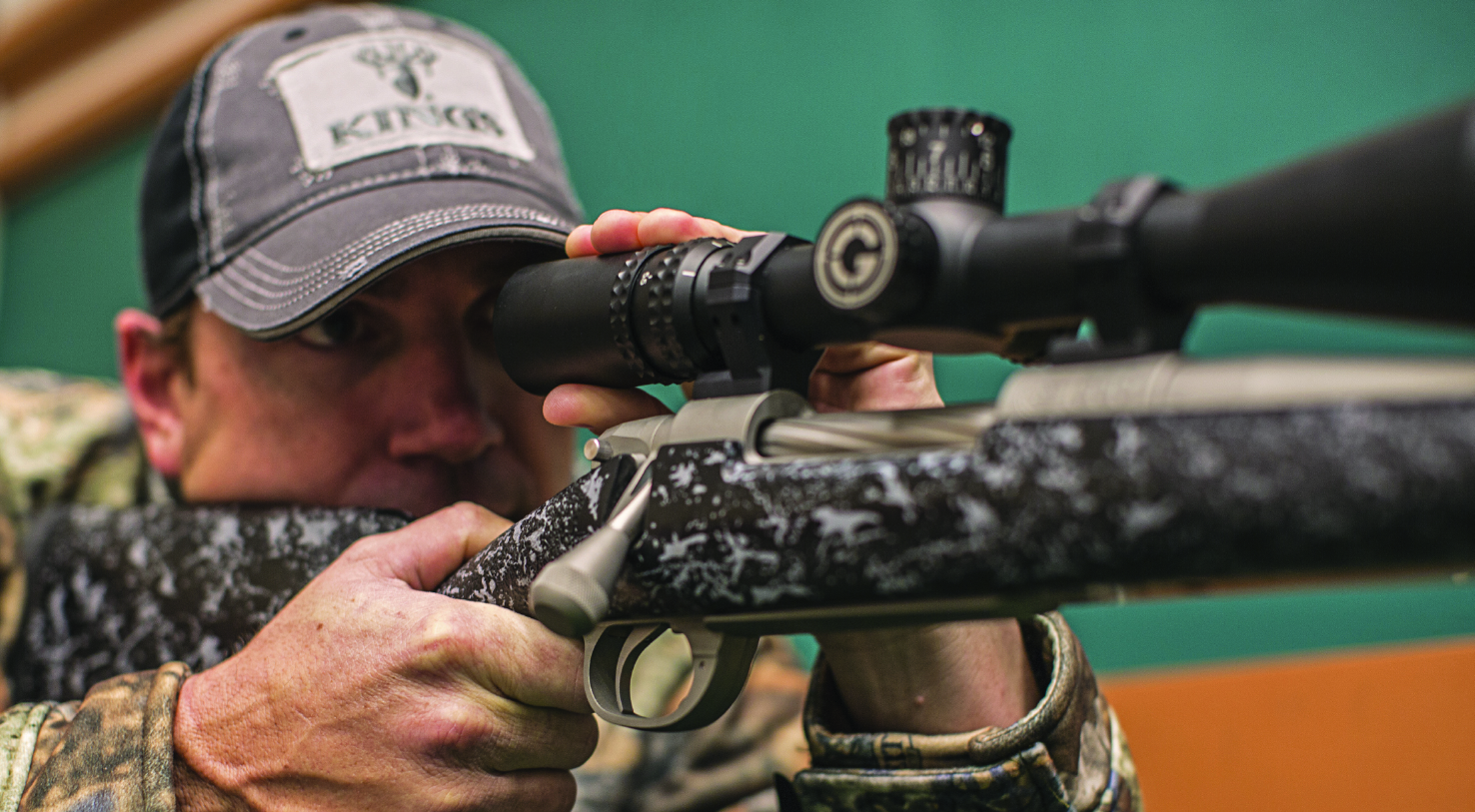
Exercise: Turn down your scope magnification as low as possible. Pick a fixed aim point as far across the room as you can manage and go through the scenario of a 500-yard shot. Taping a picture of a 400-inch bull to the wall can help with the fantasy. Imagine you have 30-seconds to get into your shooting position, find the target, dial your distance (500-yards) from your zero stop and magnify your eyepiece making all shooting adjustments and prepare to pull the trigger. This may sound easy, but it will surprise you how many variables come into play and how long this can take. Repeat this a few times changing your shot distances. Having someone with you to make up yardages can help to simulate the shooter and spotter relationship as well. This will help you to prepare for making these steps quickly in the field and also help with quick target acquisition in your scope.

DRY FIRING
Knowing your trigger and the pressure required to break the shot varies between rifles and is something each shooter must know. Some people will tell you it’s a good thing to be surprised when your rifle goes off. I personally want to know exactly how much pressure is required so I can make a slow trigger pull and have confidence it will break the same way every time. You should have a very good idea of the feel and pressure required to break your trigger. My rifle is set up to break at a 2 1⁄2-pounds. Many factory guns are set much higher at almost 5-pounds or more. Again, double check your rifle is empty and then select a safe direction to aim.
Exercise: Find an exact point to use as your bullseye. Just like before, make your practice as realistic as possible, so if you’re hunting with gloves then practice with gloves. What you’re looking for in this exercise is that your cross-hairs don’t jump off your exact aim point when the trigger breaks. If the cross-hairs remain on the bullseye then you can be confident knowing your squeeze is correct and your aim point is staying true. This can be practiced at any distance, but make a point to include the previous exercises in combination with this step of your practice routine. If you are balanced and no outside human elements of torque or positioning have influenced a good clean trigger pull, you should be able to replicate this scenario over and over with the same result. A comfortable squeeze where your cross-hairs stay exactly on your aim point will give you huge confidence.
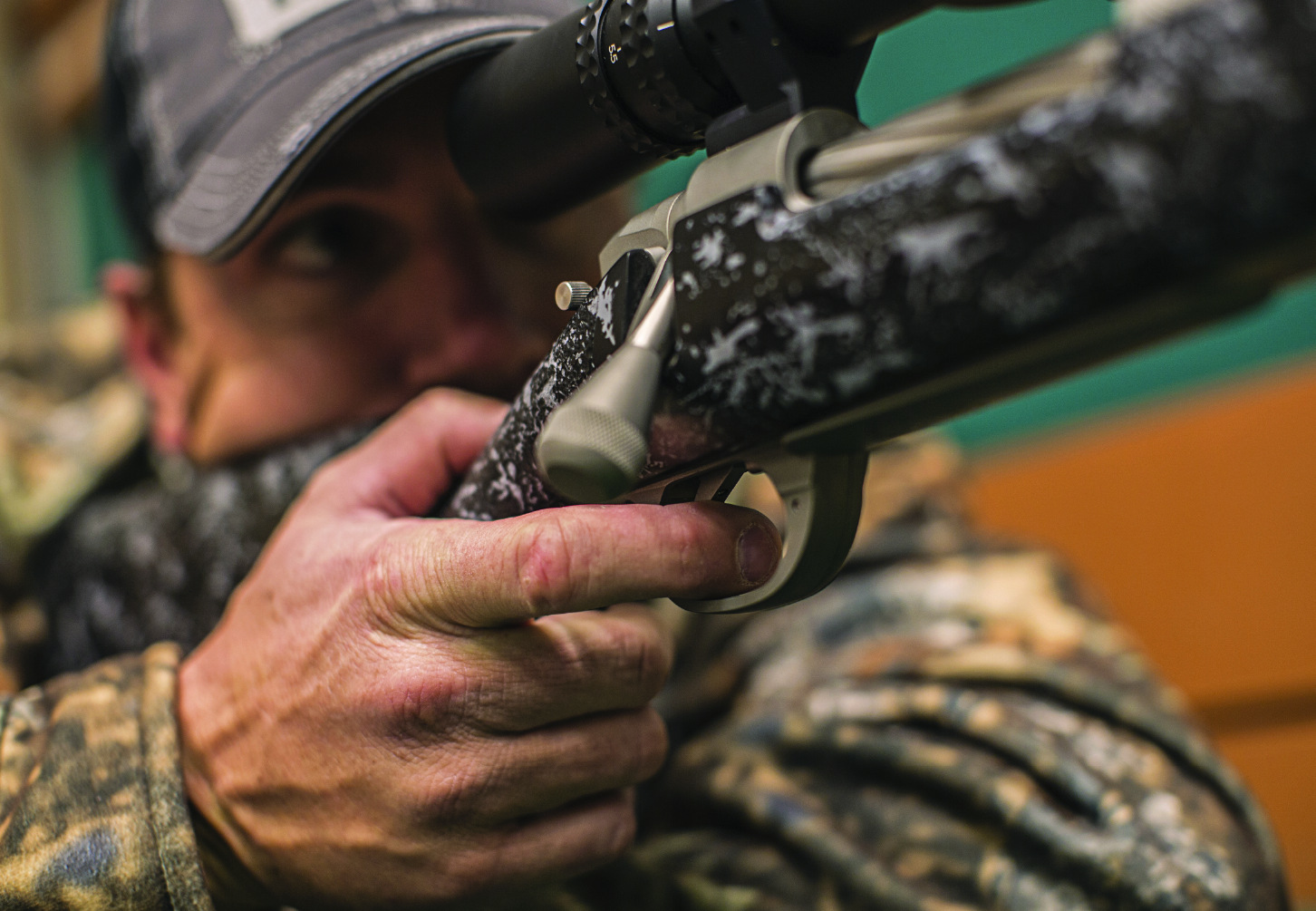
Shooting, like any other skilled behavior, requires muscle memory and practice. Much like the athletes of today, year round preparation will keep things fresh and polished. It’s this practice time behind our caliber of choice that keeps us sharp behind the trigger. Knowledge is power, and knowing you have prepared will no doubt be rewarded when it’s your next moment of truth. Most of us weren’t blessed to become superstar athletes, but with practice and the right equipment we can all become excellent shooters.
